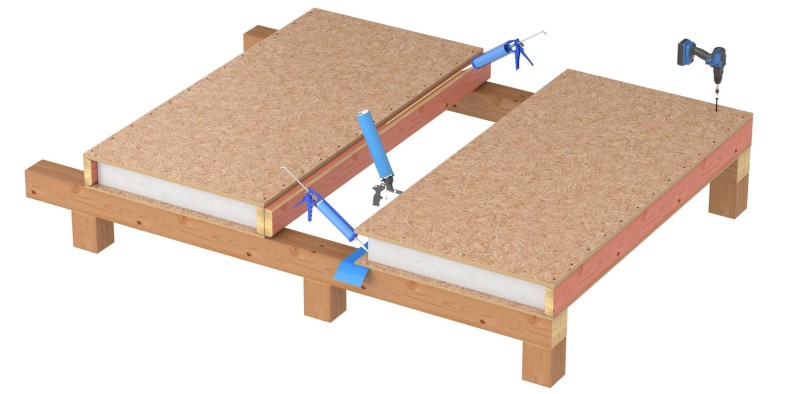Can You Use SIPs for Floors? A Comprehensive Guide by Formance

Can You Use SIPs for Floors? A Comprehensive Guide by Formance
When it comes to modern construction, selecting the right materials is crucial for ensuring strength, energy efficiency, and overall quality. Structural Insulated Panels (SIPs) have become a popular choice in the building industry for their exceptional performance. At Formance, we are often asked whether SIPs can be used for floors. The answer is a resounding yes! In this article, we'll explore the benefits, technical aspects, and considerations of using SIPs for flooring, providing insights for architects, builders, and homeowners alike.
What Are SIPs?
Structural Insulated Panels (SIPs) are high-performance building panels used in walls, roofs, and floors. These panels consist of an insulating foam core sandwiched between two structural facings, typically made of oriented strand board (OSB). This construction method offers unparalleled strength, energy efficiency, and speed of installation.
Benefits of Using Formance SIPs for Floors
Energy Efficiency Formance SIPs offer superior insulation, significantly reducing heat loss and gain. Floors constructed with SIPs help maintain consistent indoor temperatures, leading to lower heating and cooling costs. This makes them an excellent choice for energy-efficient building designs.
Strength and Durability SIPs from Formance are designed to provide exceptional strength and durability. They can support substantial loads, making them suitable for various flooring applications, from residential homes to commercial buildings. This robustness ensures long-lasting performance and reliability.
Speed of Installation One of the standout features of Formance SIPs is their ease and speed of installation. Prefabricated and precision-cut to size, SIPs can be quickly assembled on-site. This reduces construction time, allowing projects to be completed faster and more efficiently.
Improved Indoor Air Quality Formance SIPs create a tight building envelope, minimizing air infiltration. This can enhance indoor air quality by reducing the entry of pollutants, allergens, and moisture. For projects focused on health and comfort, SIPs are a valuable addition.
Sustainability Formance SIPs are an environmentally friendly choice. Made from renewable resources and contributing to energy-efficient building designs, they help reduce the overall carbon footprint of construction projects. Choosing SIPs aligns with sustainable building practices and green certifications.
Technical Aspects of Formance SIP Floors
Panel Composition and Specifications Formance SIPs are constructed with a rigid insulation core made from Expanded Polystyrene (EPS) or Polyurethane (PUR), bonded between two layers of Oriented Strand Board (OSB). The floor panels specifically have a 20mm structural top skin and an 11.1mm OSB bottom skin with an EPS core. The panels are typically 1200mm wide with lengths varying from 2400mm to 3600mm all pre-cut to suit your specific design.
Load-Bearing Capacity The structural performance of Formance SIP floors is impressive. The panels can handle significant live and dead loads, making them suitable for both residential and commercial applications. According to the Formance Install Guide, the SIP floors are engineered to meet or exceed building code requirements, ensuring safety and reliability.
Thermal Performance Formance SIPs provide excellent thermal insulation, with R-values significantly higher than traditional construction methods. The continuous insulation provided by SIP floors eliminates thermal bridging, which enhances overall energy efficiency. This is particularly beneficial for projects aiming for high-performance building standards like Passive House.
Moisture Management Proper moisture management is crucial when using SIPs for floors. Formance SIPs are designed with moisture resistance in mind, and additional measures such as waterproofing membranes and proper ventilation are recommended to prevent any moisture-related issues.
Considerations When Using Formance SIPs for Floors
Cost While SIPs offer numerous advantages, the initial investment may be higher than traditional building materials. However, the long-term savings on energy bills and reduced construction time can offset the initial costs, providing excellent value over time.
Design Flexibility SIPs offer design flexibility but may require careful planning and adjustments for complex floor layouts. Collaborating with architects and builders experienced in SIP construction can help navigate these challenges and achieve the desired design.
Installation Expertise While SIPs are relatively easy to install, it is essential to have a team familiar with SIP construction. Proper installation techniques are critical to achieving the best performance and longevity of the SIP floors.
Conclusion
Using Formance SIPs for floors is a highly effective and advantageous option for a wide range of construction and renovation projects. Their benefits, including energy efficiency, strength, speed of installation, improved indoor air quality, and sustainability, make them a superior choice for modern building designs.
Whether you're an architect, builder, or homeowner, considering SIPs for your flooring can lead to a more durable, energy-efficient, and sustainable building. For more information on integrating SIPs into your next project, reach out to the experts at Formance. Discover the transformative impact of SIP technology and elevate the quality and performance of your construction endeavors.
Check out the video below of William Hubbard talking about one of our recent floor panel projects.
Contact [email protected] to find out more!






